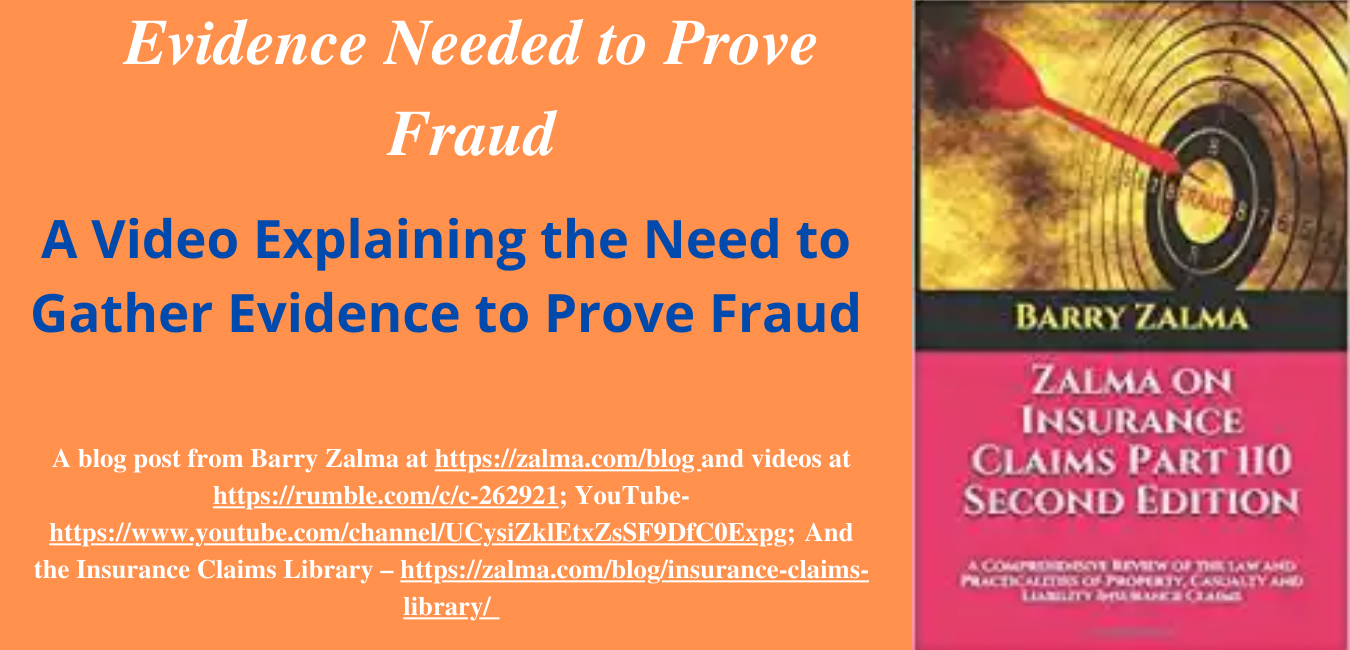-
News Feed
- EXPLORE
-
Pagini
-
Grupuri
-
Events
-
Blogs
-
Marketplace
-
Offers
-
Jobs
-
Developers
Evidence Needed to Prove Insurance Fraud

A Video Explaining the Need to Gather Evidence to Prove Fraud
Read the full article at https://www.linkedin.com/pulse/evidence-needed-prove-fraud-barry-zalma-esq-cfe and see the full video at https://www.rumble.com/zalma and at https://youtu.be/nC6qi-AtCe4 and at https://zalma.com/blog plus more than 3900 posts.
Evidence is broken into two major categories: direct and circumstantial.
Direct Evidence
Direct evidence is proof that tends to show existence of a fact in question without the intervention of the proof of any fact. It includes testimony that tends to prove or disprove a fact in issue directly, such as eye-witness testimony or a confession.
Sometimes, direct evidence may not exist because records have been destroyed in a fire, destroyed by water, stolen, discarded, or eaten by vermin.
If direct evidence does not exist for any reason, circumstantial evidence must be produced to prove the fraud.
Circumstantial Evidence
Circumstantial evidence is all evidence of an indirect nature when the existence of the principal fact is deduced from evidentiary facts by a process of probability reasoning. The investigator takes circumstantial evidence and uses deductive reasoning to reach a conclusion. Circumstantial evidence and the deductions of a professional investigator are often more reliable than direct evidence like eye-witness testimony. Circumstantial evidence is sufficient to establish proof of arson and other criminal activities.
Clear and Convincing Evidence
The “clear and convincing” standard is a very difficult and stringent standard to establish. In New Jersey, in the case of Italian Fisherman, Inc. v. Commercial Union, 215 N.J. Super. 278, 521 A. 2d 912 (1987), the court refused to accept the clear and convincing evidence standard of proof proposed by the plaintiff in an insurance fraud defense, pointing out that proof of fraud by a preponderance of the evidence (50 percent plus one, which is much easier to establish than the “clear and convincing evidence” standard) renders the insurance policy void from its inception.
Preponderance of Evidence
An insurer need only prove arson by a preponderance of the evidence
Scienter
In fraud cases, where intent, knowledge, and scienter (evil intent or guilty knowledge) constitute essential elements of the offense, evidence of similar frauds and misrepresentations is admissible at trial. The insurer need only demonstrate the facts elicited during an investigation that support the founded belief that a fraud was attempted. Circumstantial evidence is sufficient to prove such facts if a party’s conduct may be reasonably inferred based upon logical inferences to be drawn from the evidence.
ZALMA OPINION
It is absolutely necessary that every person involved in the insurance claims profession understand the evidence that is needed to prove fraud so that they can evaluate whether or not to deal with an attempted fraud.
We are 100% funded for October.
Thanks to everyone who helped out. 🥰
Xephula monthly operating expenses for 2024 - Server: $143/month - Backup Software: $6/month - Object Storage: $6/month - SMTP Service: $10/month - Stripe Processing Fees: ~$10/month - Total: $175/month
- Art
- Causes
- Crafts
- Crime
- Dance
- Drinks
- Film
- Finance
- Fitness
- Food
- Jocuri
- Gardening
- Health
- Home
- Literature
- Music
- Networking
- Paranormal
- Alte
- Politics
- Director
- News
- Party
- Science
- Religion
- Shopping
- Sports
- SyFy
- Politically Incorrect
- Philosophy
- Theater
- Technology
- Wellness



